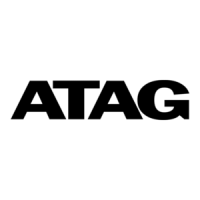8 | P a g e
11. In the case of a combi, check the plate heat exchanger is not blocked.
12. Check for Voltage at the pump. You can force the pump:
• By removing PWM cable to allow 230v cable to power pump at full speed.
• If pump does not run via above tests check pins on pump not bent – straighten to fix and check
continuity across wiring harness. If all ok and no voltage going to pump, then PCB fault.
• If voltage to pump and all other checks are ok, replace pump.
13. If all the above checks are ok, PCB may be at fault.
*Note * If plastic pipes are used, they must be barrier pipes & UFH must comply with DIN4726-4729. If this is not the
case, system separation must be provided as these pipes are porous & will allow air into the system.
113 Description: Flue gas sensor (T5) fault.
Cause: Flue gas sensor not fitted to our boilers so if 113 fault code appears replace PCB.
117 Description: Water pressure too high (>3 bar).
Cause: Excessive water pressure in system.
1. Check filling loop is turned off and not passing, replace as required.
2. Check for secondary filling loops in the system and check as per point 1.
3. For combi’s check main water pressure not passing back through plate heat exchanger by isolating cold main
into boiler.
4. Ensure adequate expansion for property.
5. Check expansion vessel flexi hose is correctly connected with no kinks or blockages.
6. Check expansion vessel pressure is set correctly as per the manufacturer’s instructions, and check Shrader
core for leakage.
• Water in the expansion vessel may only be condensation and can be removed using the
expansion vessel service procedure found on page 68.
• Check expansion vessel not leaking, replace as required.
• If the expansion vessel is of adequate size for the property, is not leaking and has been fully
serviced but not holding pressure, replace the expansion vessel.
7. On rare occasions unvented cylinders may pass back to the central heating via a burst coil. Isolate the mains
to confirm.

